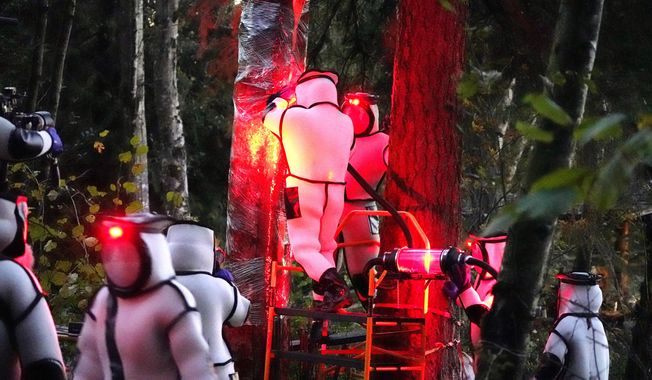
FILE - In this May 2, 2017, file photo, a U.S. missile defense system called Terminal High Altitude Area Defense, or THAAD, is installed on a golf course in Seongju, South Korea. The threat to Japan from North Korea has reached a “new stage” now that the country is capable of launching an intercontinental ballistic missile and its nuclear weapons program has advanced, a defense ministry report said Tuesday, Aug. 8, 2017. The report did not mention the possibility of installing more advanced defense systems such as the land-based Aegis Ashore and THAAD, or allowing Japan’s self-defense-only troops to conduct retaliatory attacks as proposed by Japanese Prime Minister Shinzo Abe’s ruling Liberal Democratic Party this year. The THAAD system was deployed last year in South Korea, much to the irritation of China, which has opposed the installation of systems it suspects could be used to conduct surveillance from outside its borders. (Kim Jun-beom/Yonhap via AP, File)
Featured Photo Galleries








Trump Transition: Here are the people Trump has picked for key positions so far
President-elect Donald Trump has announced a flurry of picks for his incoming administration. Get full coverage of the Trump transition from The Washingon Times.






